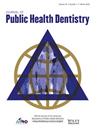Dental Care Utilization Among Middle Eastern and North African Children in the United States
Abstract
Objectives
This cross-sectional secondary analytical study estimated dentist visits among foreign-born Middle Eastern and North African (MENA) children compared to US-born White and foreign-born White, Black, Hispanic, and Asian children. This is the first known study to provide national estimates for dental visits among MENA children who have historically been aggregated with the White population.
Methods
We used 2000–2018 National Health Interview Survey data (N = 358,686 children). We calculated age- and sex-adjusted prevalence estimates and performed multivariable logistic regression to test the odds of dentist visit utilization by race, ethnicity, and nativity. Covariates included age, family poverty level, health insurance coverage, and special health care needs.
Results
Dental visits at 6 months were approximately 64% for US-born White and foreign-born MENA children. Most (77.4%) foreign-born MENA children had a dentist visit in the past 12 months. Results were similar for US- and foreign-born White (80.8% and 79.9%, respectively) children. Fewer foreign-born Black (49.5%), Hispanic (47.7%), and Asian (54.6%) children had a dentist visit in the past 12 months. Results from logistic regression modeling showed that foreign-born MENA children's receipt of dental visits at 12 months was similar to US-born White children after adjustment (OR = 0.98; 95% CI = 0.76–1.27). Findings were similar for foreign-born White children. Foreign-born Black, Hispanic, and Asian children had lower odds of receiving dental visits at 12 months compared to US-born White children.
Conclusions
Findings suggest high dental care utilization among foreign-born MENA children. Additionally, dental care utilization for foreign-born MENA children was similar to their US- and foreign-born White peers. This study has implications for national health policy and policy reform for federal reporting standards for MENA populations.

 求助内容:
求助内容: 应助结果提醒方式:
应助结果提醒方式:


